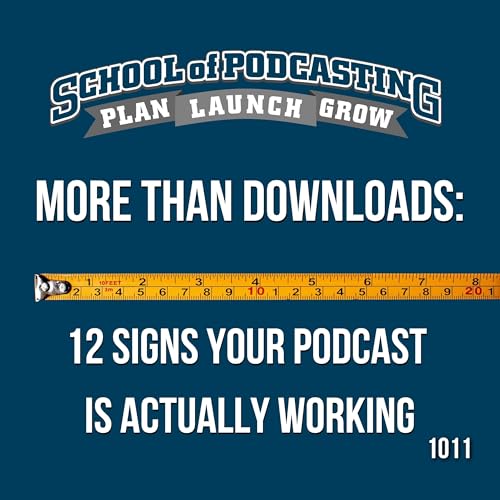Hey, it's Dave! In this episode (which uses chapters FYI), I take you through a year-end wrap-up, sharing stories, rants, insights, and predictions about the world of podcasting. Here are the main points I covered:
1. A Christmas Story with a Lesson for Podcasters
I kicked things off with a humorous Christmas tale about the Cridland Boys Choir, and what happens when you keep loosening your standards just to hit a target—a not-so-subtle lesson for the podcasting world.
2. Pushing Back on Changing Definitions in Podcasting
I strongly disagreed with Steve Goldstein and Jay Nachlis' take that YouTube should be considered podcasts. (also TikTok, and Newsletters).
I emphasized that a podcast, by definition, is audio, video, or PDF delivered via RSS—without that, it's not a podcast.
3. Why "Everything Is a Podcast" is Dangerous
I called out the industry for letting YouTube (and now TikTok) hijack the term "podcast," muddling data and damaging clarity around the medium.
4. The Hazards of Exclusive Distribution Deals
I discussed how exclusive distribution (like those seen with Netflix and Spotify) leads to loss of control and audiences for podcasters.
5. Warning Signs of Big Companies Manipulating Podcasting
Shared concerns about major corporations and what happens when their decisions are driven mainly by shareholder profits and not creators or audiences.
6. AI Content Flooding the Podcast Space
I highlighted the dangers of companies like Inception Point AI mass-producing low-value podcasts, cluttering directories, harming discoverability, and devaluing advertising rates.
7.Common Missteps Hurting Podcast Discovery
I warned about creating duplicate listings in Apple Podcasts and elsewhere, usually when moving hosts, and the importance of understanding how to migrate your show correctly.
8. Show Name Collisions
I noted the confusion caused by multiple shows using the same title (like "Thinking Outside the Box") and urged creators to do their research before naming their show.
9. Monetization Predictions for the Coming Year
I predicted a shift toward premium/patron-supported models as podcasters get frustrated with low ad rates.
10. The Fight Against "AI Slop"
I advocated for collectively pushing back against low-quality, AI-generated spam content in our medium.
11. Upcoming Industry Mergers
I think we'll see podcast-related companies merging or being acquired in the near future.
12. The Reality of YouTube for Podcasters
I expect many podcasters to try YouTube, realize it's not for them, and return to audio-first approaches—while some will succeed by mastering the video platform.
13. A Desire for More Creativity in Podcasting
I called for a resurgence of risk-taking and creative experimentation, rather than everyone following the same tired formats.
Podcasts/Shows Noted:
Pod News Weekly Review
No Agenda Show
Good Hang with Amy Poehler
Things We Learn in a Bar
Work for the Wind by Aliyah Langley
 Dec 22 202552 m
Dec 22 202552 m 38 m
38 m 45 m
45 m 41 m
41 m Nov 24 202541 m
Nov 24 202541 m 50 m
50 m 37 m
37 m 37 m
37 m
